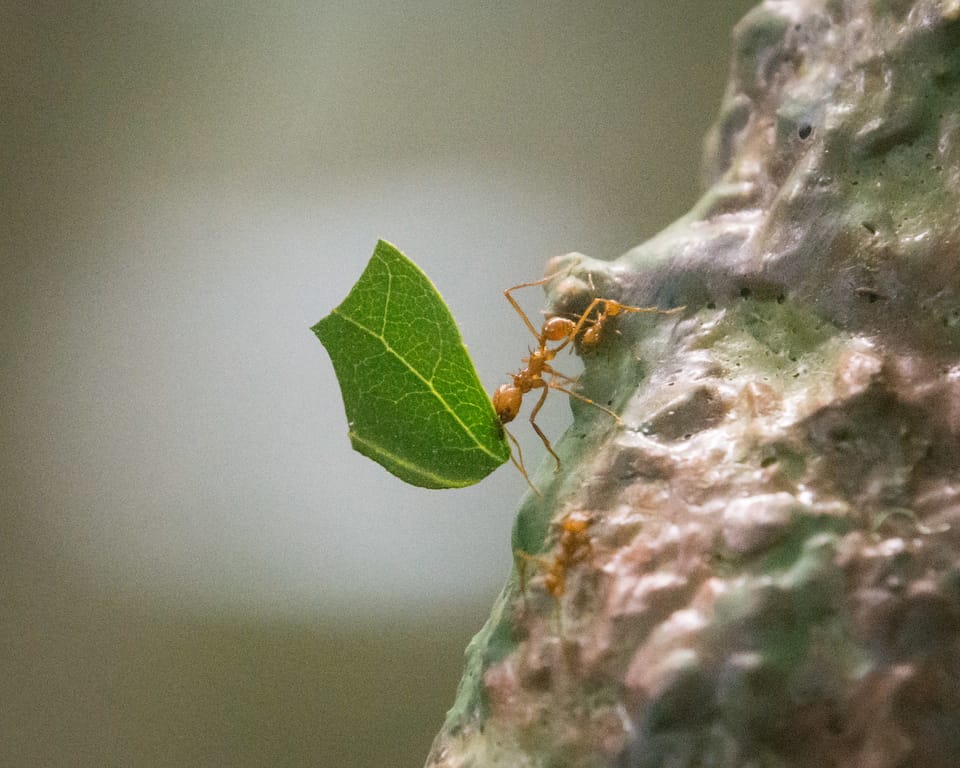Book Review: Bugwatching: The Art, Joy, and Importance of Observing Insects by Eric R. Eaton

In Bugwatching: The Art, Joy, and Importance of Observing Insects, Eric R. Eaton emphasizes the many rewards of bugwatching as well as providing helpful advice on how best to find and watch bugs.
The Rewards of Bugwatching
“What sort of insects do you rejoice in, where you come from?” – The Gnat in Through the Looking Glass by Lewis Carroll
Insects are everywhere, in greater quantities and greater diversity than any other creature. While butterflies are beautiful and fireflies’ flashing lights are enchanting, it may take a closer look to see the beauty in other insects. But it is there. The eyes of horse and deer flies can be striped, spotted, or multi-coloured. Leafhoppers may be small, but they come in an extraordinary array of colours and patterns. “Especially for the beginner, the potential for new revelations about insects abounds every time one goes outdoors. Insects are the perfect vehicles to ignite curiosity and a sense of wonder in children of all ages,” Eric R. Eaton says.
How to Watch Bugs
“Walk slow. Look close. Be curious.” – M. J. Hatfield
Eaton recommends waiting for rather than pursuing insects. Choose a small scannable area, place your back to the sun, and adjust your search to focus on small things. If you’re walking, take it slowly as insects can detect motion better than most animals. Pause frequently and retrace your steps as insect activity changes rapidly.
It helps to use all your senses when bugwatching. Flying insects may buzz or whine. Crickets rub opposing body parts against one another to make sound. Click beetles “get their name from the loud click produced when they snap a ventral spine into a groove on their chest.” A number of insects emit a strong smell. Touching an insect isn’t recommended unless you know what it is. You may injure them, while others, such as fuzzy caterpillars with hidden venomous spines, may injure you.
Finding Insects
“Once you see one, you’ll see them everywhere.” – Laura Schare
It takes time to develop your bugwatching skills. They’re often very tiny and can blend into the landscape. “To get started bugwatching, simply staring at the landscape is an under-rated exercise,” Eaton says. “Camouflaged organisms will begin to resolve themselves from tree trunks, grass-blades, flower blossoms, and sand or soil. Slight movements will become discernible, and fast-flying insects will capture your attention.”
While insects can be found in backyards and even homes, Eaton recommends 12 “must see” situations for bugwatching. They are: public gardens, zoo, and cemeteries; sunlit patches in forests; aphid colonies; fresh-cut timber; rest stops at night; mud puddles; sap flows; open summits of hills, buttes, and outcrops; cliffs and cave entrances; decaying plant and animal matter; vertebrate excrement; and fungi.
Bringing Bugs to You
“It does not take much to turn yourself into an insect magnet.” – Eric R. Eaton
Bugwatching offers a wide range of methods to make observing insects easier. Landscaping with native plants and trees increases biodiversity, expanding opportunities for observing insects close to home. Some insects, such as sweat bees, are attracted to the salts and minerals in human perspiration and will land on your arm if you stay still. An orange slice, a spot of jam, or an uncovered compost pile will all attract insects. Painting a fermented, sugary mixture on a tree trunk will attract moths once it’s dark.
Identifying Insects
“Lower your expectations … Congratulate yourself for recognizing the creature as an insect or maybe even a specific type of insect.” – Eric R. Eaton
Eric R. Eaton recognizes there are many obstacles to identifying insects due to factors such as metamorphosis, sexual dimorphism, and mimicry. Unlike birds, you can’t rely on a guidebook or website (although iNaturalist is very helpful), but the more you observe, the better you will get. How an insect moves and its habitat or host plant/animal will help to narrow down the list of options. Eaton also provides specific tips for distinguishing between bugs, beetles, and cockroaches; flies, bees, and wasps; and other similar insects.
Insect Behaviours
“Exploring your backyard can reveal life-and-death struggles, symbiotic relationships, and social cooperation among the insects.” – Eric R. Eaton
Eaton says common behaviours such as feeding, mating, nesting, swarming, and migration offer clues to the identities of insects. They can also be highly entertaining. Dragonflies mating or the courtship rituals of robber flies are well worth observing. Male grasshoppers exhibit surprisingly complex behaviour when attracting the attention of a female. Colonies of ants may come together in a territorial battle, while other insects camouflage themselves with bits of debris. Take a close look at a damaged plant, and you may spot a plant-eating insect.
Further Information
Wasps: The Astonishing Diversity of a Misunderstood Insect [Eric R. Eaton]
Bug Eric [Eric R. Eaton]
Six Unexpected Pollinators [EcoFriendly West]
Spiders: From Crabs and Wolves to Pirates and Paradise [EcoFriendly West]
Ants: Farmers, Herders, Recyclers, Distributors & Prey [EcoFriendly West]
Photo credit: https://www.flickr.com/photos/apmckinlay/34696185026
EcoFriendly West informs and encourages initiatives that support Western Canada’s natural environment through its online publication and the Nature Companion website/app. Like us on Facebook, follow us on BlueSky, X, and Mastodon, or subscribe by email.

Member discussion